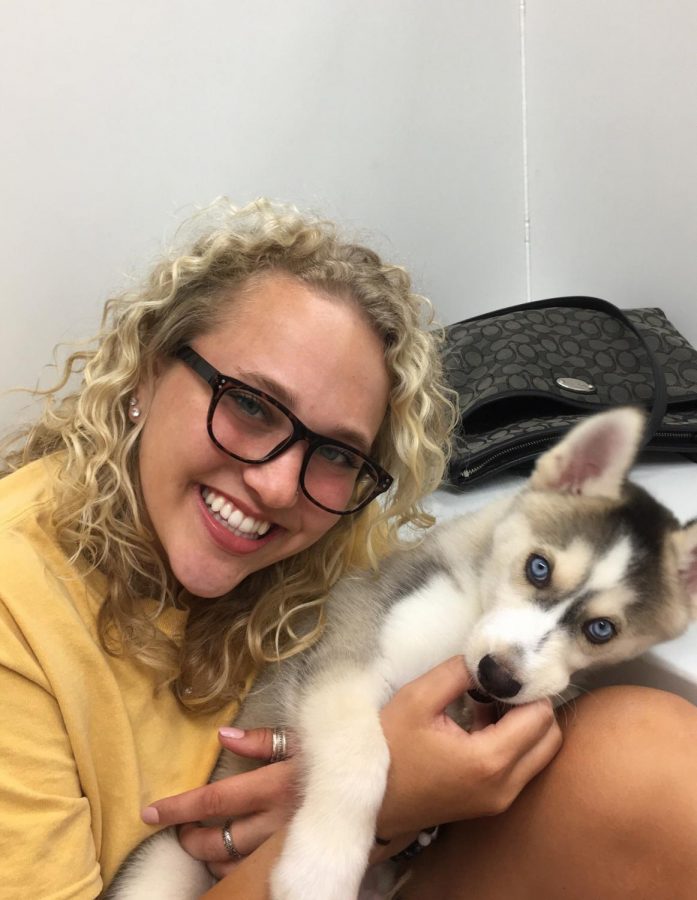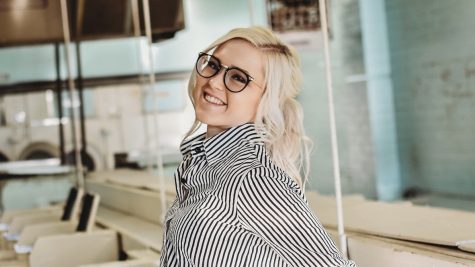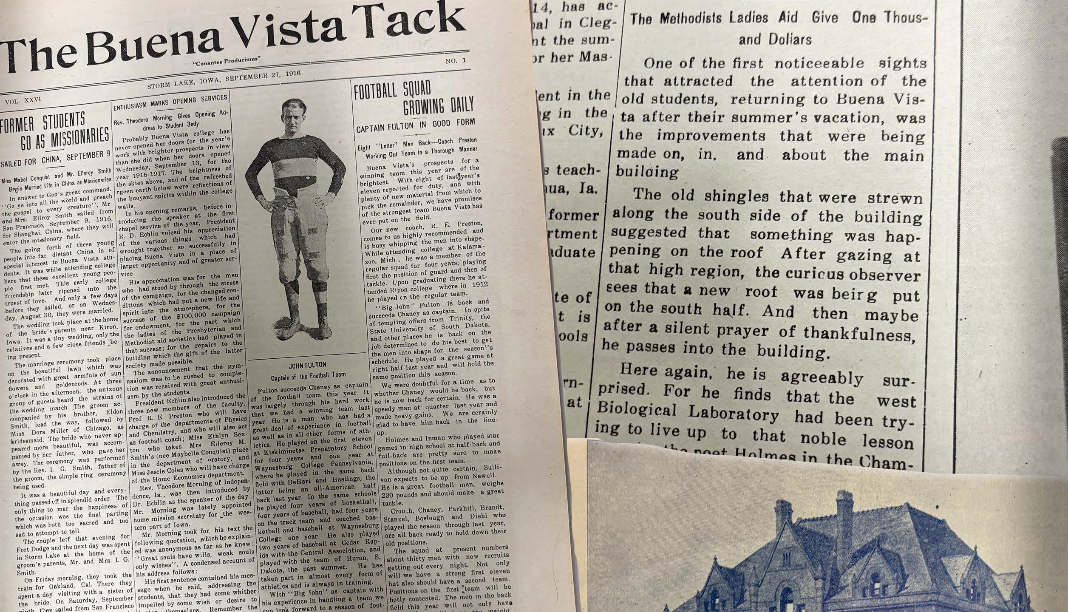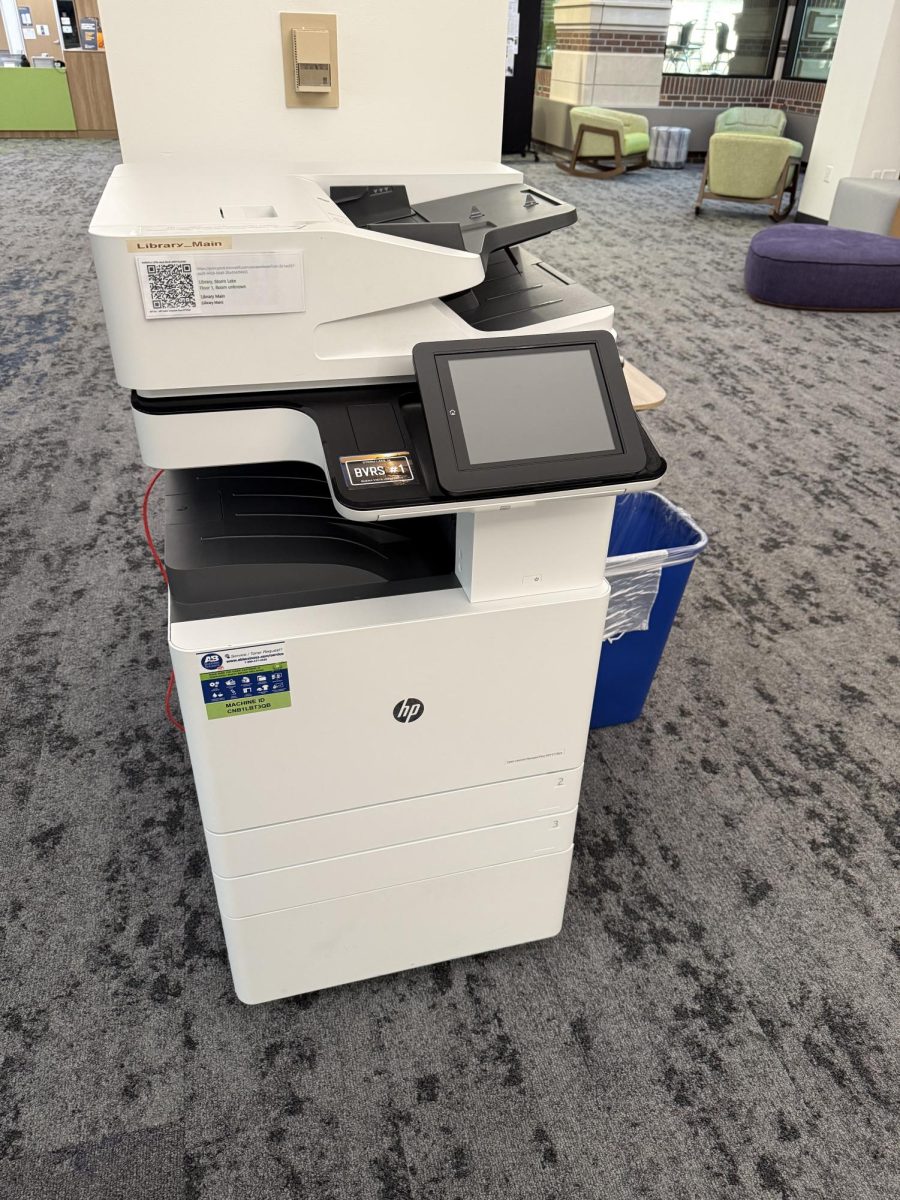Managing diabetes while in college
March 30, 2018
If you saw Sydney Gunderson, junior at Buena Vista University, you would not know that she has dealt with a disease since she was six years old.
Sydney has type 1 diabetes, which is a chronic condition in which the pancreas produces little or no insulin. Insulin is a hormone which is necessary for bodily functioning because it breaks down carbohydrates in food you eat to give your body energy it needs. Additionally, it places glucose into storage to utilize for future purposes and regulates blood sugar levels.
Sydney does not remember a time before she had diabetes.
“I grew up with it. It’s kind of second nature with me now, because I’ve had it since I was so young,” Sydney says.
Shortly before diagnosis, Sydney was exceedingly thirsty. She began to drink a ton of water, but did not eat much at all. The thirst was her body telling her to flush out “bad fluids,” which were actually sugars from food which did not have insulin to break them down. Her parents, Carrie and Greg Gunderson, took her to the doctor, and they found her blood sugar was out of whack.
To manage her blood sugar, Sydney has had an insulin pump for almost all of her diabetic life, which looks like a mini cell phone, and is easy to hide under clothing. It does the vast majority of work for her, giving her doses of insulin each hour, which are regulated by information Sydney programs into the pump. She pricks her finger and squeezes out a drop of blood onto a test strip, a small disposable strip of plastic. This tiny piece of plastic is then inserted into a meter, which tells Sydney her blood sugar level. The only other tasks Sydney has is to put her blood sugar level and amount of carbohydrates in each food she eats into the pump, which informs her the amount of insulin the pump will give her.
Before Sydney had any knowledge of how many carbs a food has, she used to have a huge book full of food facts to check these particulars. Through this book, she learned to gauge how many carbs a food contains.
“Now, I can look at an apple, and I know that it’s about 20 grams of carbs, from looking at that book for every single meal for about six years of my life. You kind of get used to it,” Sydney says.
The only other tasks Sydney does with her pump is change her site and reservoir. Her site is what connects her insulin pump to her body, and the reservoir is what holds the insulin inside the pump. Insulin is provided by her doctor.
She does not remember a lot about when she was first diagnosed with the disease because of her young age. But Sydney does recall her parents doing anything they possibly could to assist her.
“My parents literally did everything they could for me to start out. They walked me through it. They’ve always been so supportive and encouraging,” she says.
When Sydney was young, she did not mind having diabetes at all. In fact, she liked it, because she got to eat when others didn’t, and had her own snack drawer in the classroom. When she got older, things changed, especially in high school sports, volleyball and tennis.
“As I grew older, I started kind of realizing that people might think of me differently, especially when it comes to sports. I didn’t want people to think that I used it as an excuse when I wasn’t performing as well as some of the other kids,” Sydney remembers.
As Sydney continued to grow, the realization that this could affect her sports performance came. Sydney approached this as a challenge, and began to take steps in advance to prepare effectively for physical activity. She was not looked down upon for having this disease, but people wanted to help her in reaching her full potential.
Sydney says she’s been lucky to not have had any extreme episodes, such as trips to the ER or hospital, throughout her diabetes history. However, she has passed out a few times. In fourth grade, she was walking back to her classroom after reading group, and her teacher caught her as she fell to the floor.
“I woke up about ten seconds after, and I got to miss school for the rest of the day, so that was pretty cool. I remember Aaron Mumm [BVU junior], one of my classmates, thought I died,” Sydney says.
Aaron still vividly recalls this incident.
“We all got up because we were getting in line to do something, and then I look over and I see Sydney just fall to the ground. WHAM! And she was not conscious or moving. That was the first time I have ever seen someone do that so I didn’t know what to think. It did not help that the teacher and other kids kind of freaked out, so I thought she might have died!” Aaron says.
Later the same day, Aaron remembers his teacher informing the class that Sydney had diabetes and everything was okay, a much needed relief for their fourth grade minds.
If Sydney’s blood sugar is low, she feels lightheaded and needs to eat more. If it is high, she feels faint, sick, or tremendously thirsty. In that case, she needs more insulin to regulate her blood sugar. As long as she gives the correct amount of insulin for the food she eats, her blood sugar stays where it should be.
“Of all of the diseases I could have, this is probably the most manageable. Although sometimes it is hard, it’s very manageable, and I’m grateful for that. And, for the technology there is that I have available to me to deal with it. I’m very blessed,” Sydney says.
Sydney strongly believes that there is a cure coming for diabetes down the road. Because of the technology that has already been invented, and the discoveries that have come about, Sydney is confident there is a cure on its way. A cure has been found for a rat with type 1 diabetes, which is a step in the right direction. T
he Juvenile Diabetes Research Foundation (JDRF), according to its website, is a charitable organization that raises money toward type 1 diabetes research, which is comforting for Sydney, because it helps to know there are people working toward finding a cure every single day. New technology is now being researched and implemented that may make it even easier to manage being a diabetic. The insulin pump is a widely known way to get hourly doses of insulin. Research has also been done on a fake pancreas that can be implanted.
“I don’t know if I would want that,” Sydney jokes.
The new Apple Watch recently released features an app that can help monitor glucose levels in graph form. Sydney looks forward to seeing how this can help her even more than the technology she already possesses when she receives one in the near future.
The sense of responsibility at such a young age has shaped Sydney throughout her life. It has helped her to realize how truly important it is to take care of herself and maintain good health overall. Sydney’s mother is extremely proud of the woman she has become through her life experiences because of her status as a diabetic.
“The strongest people may handle things humbly and quietly, no matter how big or small the daily challenge. She took it on as she grew without complaining, but handles it the best she can. It may not be perfect everyday, but she is perfect for trying. It shows others what challenges can be overcome and still live a positive life. That’s a hero. She certainly is one of mine!” says Carrie.
Having worked with Sydney every step of the way, Carrie says it is exciting for her to see Sydney help others who need it. Sydney truly values her ability to assist kids in her mother’s third grade class who have been diagnosed with diabetes, and to help them feel more comfortable about it.
“There have been a couple times where my mom has a kid in her class who just got diagnosed with diabetes, so she asks me to write a letter or just talk to them about it because it can be comforting to talk to someone who’s been there,” Sydney says. “It’s a good feeling knowing that I can even help in the smaller way to help them know that it will all turn out okay.”
Photo courtesy Sydney Gunderson









Chukwuezugo • Mar 31, 2018 at 10:49 am
Hey Allyssa, I am loving the contents on your website.
It’s so sad sydney has to go through all that in her childhood. Thank God, she didn’t give up and was still able to stay strong.
I seen some really touching articles from others on how they managed type 2 diabetes.
You can read all about it here>>>https://bit.ly/2GI7xRr
A lot of lessons to learn. Thanks a lot